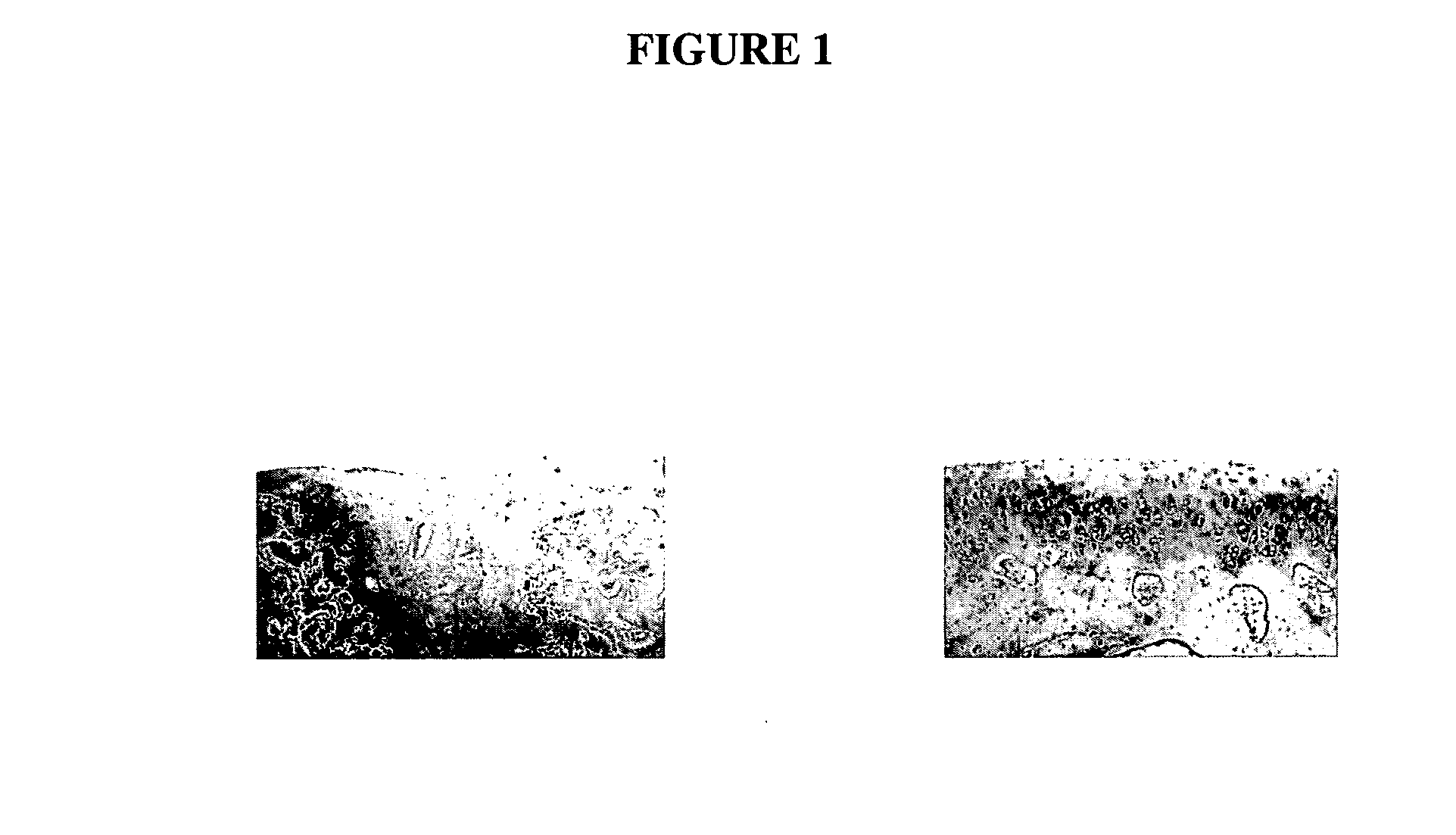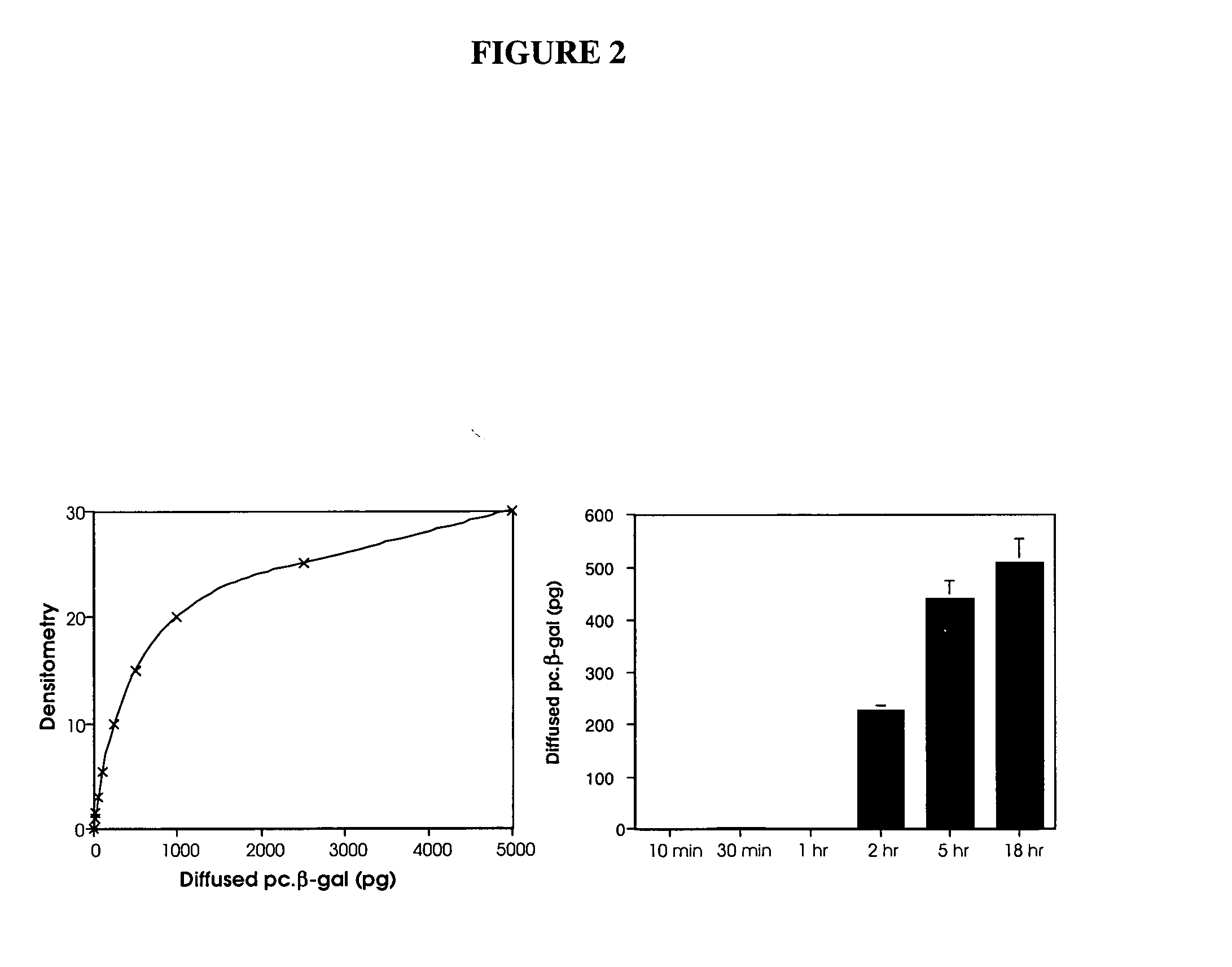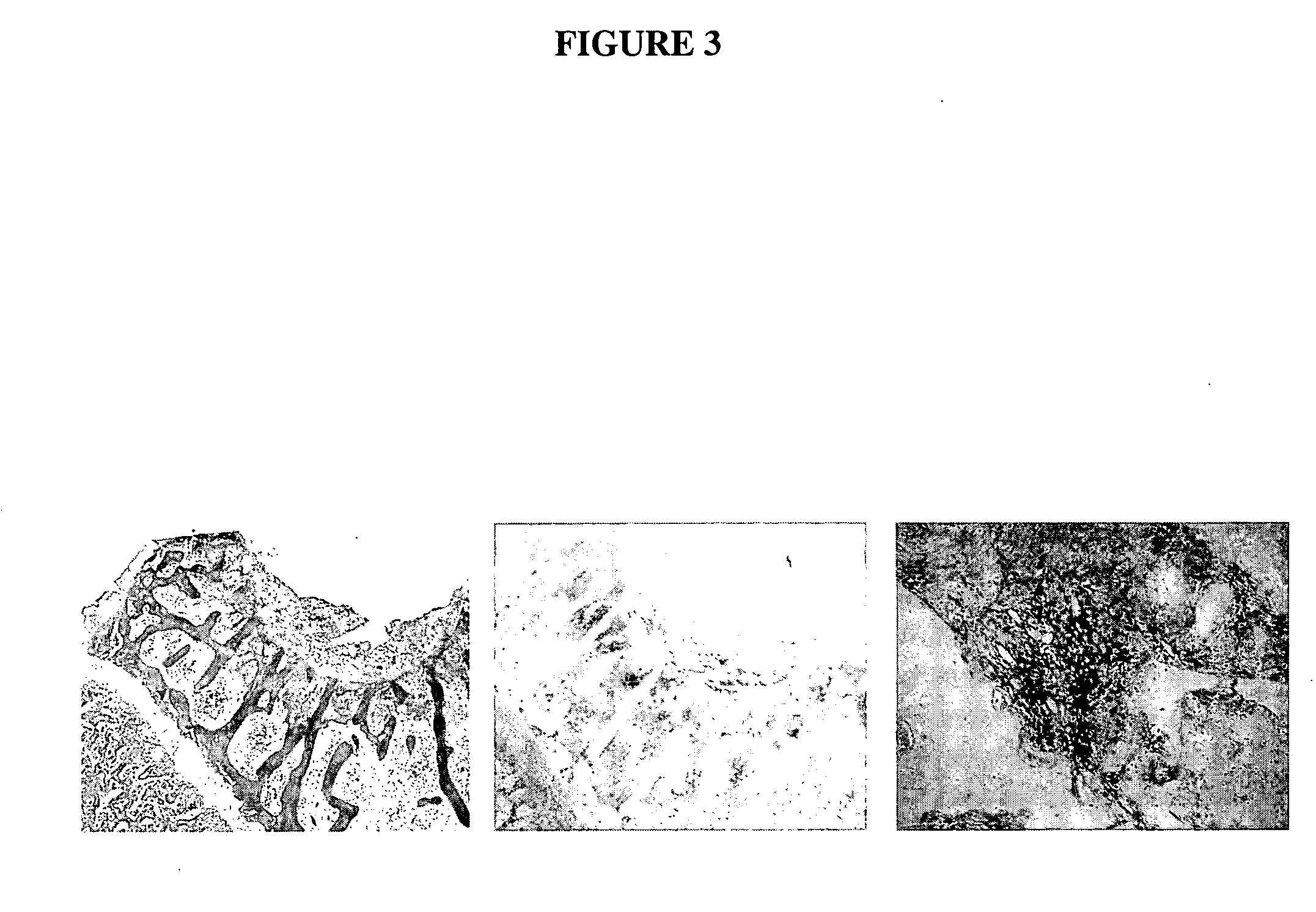Nucleic acid therapy to enhance cartilage repair
a cartilage repair and nucleic acid technology, applied in the field of nucleic acid therapy for can solve the problems of poor clinical regeneration, rare repair process effective in healing defects, and serious medical problems of osteoarthritis cartilage degeneration, so as to facilitate cartilage repair and regeneration. the effect of facilitating cartilage repair
- Summary
- Abstract
- Description
- Claims
- Application Information
AI Technical Summary
Benefits of technology
Problems solved by technology
Method used
Image
Examples
example 1
[0132] Normal joint function requires a smooth articular surface composed of hyaline cartilage. When damaged, hyaline cartilage has limited ability to repair itself, and so what may seem like a small lesion, if left untreated, can hinder one's ability to move free from pain and cause joint surface deterioration leading to arthritis.
[0133] While conventional therapeutic options may temporarily alleviate clinical symptoms, none yet succeeds in regenerating cartilage that exhibits the structural, biochemical, and biomechanical properties of healthy articular tissue. Several therapeutic agents have been identified that have the potential to stimulate cartilage repair, among them growth factors and transplanted cells, but the great expense and lack of adequate delivery mechanisms associated with their use prevent their widespread clinical application.
[0134] Another approach is to employ gene therapy, which often uses viral vectors to carrying desired genes into host cells. This type of...
example 2
Characterization of Naked Plasmid DNA Transfer to Full-Thickness Cartilaginous Defects
[0147] In our preliminary in vivo study with marker gene plasmid DNA in a rabbit full-thickness defect model, we detected marker protein in many mesenchymal cells under the defect area 1 wk postsurgery. It is clear that these cells take up the naked DNA plasmid and express protein. This study characterizes the duration of active expression of the naked plasmid DNA. 70 μg of pc.βgal / collagen or collagen sponge with control plasmid are implanted in full-thickness articular cartilage defect in 12 adult (9-month-old) male New Zealand White rabbits and samples analyzed after 3, 7, 10, and 21 days postimplantation (3 rabbits=6 knees per time point). These time points are based on other studies using naked plasmid DNA for regional gene therapy that showed active plasmid for up to 3 weeks [54-59]. At each time point, triplicate samples are immunostained with murine monoclonal antibody against β-gal and un...
example 3
Regional Gene Therapy Using Naked Plasmid DNA Encoding the BMP-2 Gene to Promote Hyaline-Like Articular Cartilage Repair
[0151] To document with statistical significance (p<0.05; power=80%) the efficacy of this technique, 9 knees per group are performed. In this study, we examine the cartilage repair at 3 months (18 animals=36 knees) postsurgery in four treatment groups: sponge only, sponge with 6 μg of recombinant human BMP-2, sponge with control plasmid pc.DNA3 (+), and sponge with naked plasmid DNA encoding BMP-2. Repair samples are examined by gross examination, histology (H&E staining), Safranin O staining for proteoglycans, immunostaining (with antibodies to type II collagen and cartilage oligomeric matrix protein).
[0152] Evaluation of cartilage repair in the defects: Cartilage defects are examined macroscopically at sacrifice. Similarity of appearance of the repair cartilage to that of normal adjacent cartilage is assessed based on color, texture, and shape of cartilage surf...
PUM
| Property | Measurement | Unit |
|---|---|---|
| Biodegradability | aaaaa | aaaaa |
Abstract
Description
Claims
Application Information
 Login to View More
Login to View More - R&D
- Intellectual Property
- Life Sciences
- Materials
- Tech Scout
- Unparalleled Data Quality
- Higher Quality Content
- 60% Fewer Hallucinations
Browse by: Latest US Patents, China's latest patents, Technical Efficacy Thesaurus, Application Domain, Technology Topic, Popular Technical Reports.
© 2025 PatSnap. All rights reserved.Legal|Privacy policy|Modern Slavery Act Transparency Statement|Sitemap|About US| Contact US: help@patsnap.com



